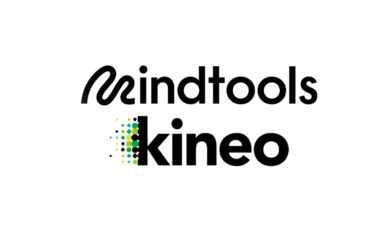Have you ever struggled to read something on your screen, and after adjusting the screen settings and your seating position, and wondering if you should buy a new screen, realized that your glasses were dirty? Of course, it has never happened to me – I’ve only ever heard of this happening to other people. I will only admit to loving lens wipes – those wonderful squares of alcohol-soaked paper that clean my glasses like magic!
When you drive, and the windscreen gets fogged, you switch on the demister, wipe the windscreen with your hand, and you’ll even pull off to the side of the road and wait for it to clear. You know it’s dangerous to drive if you can’t see what’s going on around you because you might not have enough time to react in a potentially unsafe situation.
Transparency at Home
In a committed relationship between two people, transparency is of the utmost importance. Such a relationship simply cannot thrive if each person lives in a bubble of secrecy and opacity. It might work OK initially, but it won’t thrive – and eventually it won’t survive.
Although it’s normal and natural for a child to lie sometimes, we teach them the importance of being honest with their parents for the sake of their own safety and wellbeing.
On the other hand, parents who outright lie to their children send a message that their word can’t be trusted. It has a negative impact on the child’s developing view of the world – and it makes them feel insecure.
One of my friends who got divorced chose not to tell her children about the financial arrangements between her and her husband. The children felt insecure and, in an effort to find out what was happening, eavesdropped on a conversation between my friend and her own parents one afternoon.
Later that evening, the daughter called her dad in a panic. She wanted to know if it was true that she, her brother and her mother wouldn’t have a place to live.
It wasn’t true. The children couldn’t hear everything while eavesdropping and they didn’t know the meaning of certain things, or the context in which they were said.
It’s not always wise or appropriate to tell a child everything. They might be too young to fully understand, and they might not yet have the necessary coping skills. That’s when you need to be transparent and provide age-appropriate information, but not burden them with detail that they don’t know how to process.
“Transparency doesn’t mean sharing every detail. Transparency means providing the context for the decisions we make.”
Simon Sinek, author
During that same divorce, I observed how the word transparency was weaponized in an attempt to hurt the father. The mom decided to share every detail of the father’s perceived wrongdoing (from her point of view), and she actually used the words, “For the sake of transparency, I’m going to tell the children everything he did to protect them against finding out later.”
She made it sound like she was doing it for the children and that she was just being “transparent.” However, her motive had nothing to do with transparency, and everything to do with triangulation. (Explained simply, triangulation in psychology is the dynamic that happens when two people disagree – in this case, the mother and father – and a third person gets drawn into the disagreement – in this case, the children – in an effort to manipulate the situation.)
What Happens at Work?
We see triangulation in the workplace, too. Two people have a disagreement, and instead of talking it out directly and honestly, one of them draws a third, uninvolved person into the situation, not to mediate or help, but to take the side of the one who involves them. The words honesty and transparency often surface in this toxic mixture. “For the sake of honesty… ” or, “To be completely transparent… ” It’s an example of good words being made bad.
I’ve also seen “transparency” used as a tool of revenge. “For the sake of transparency I’m going to tell everybody in the meeting here… ” when everybody in the meeting has no business knowing, and they don’t have the power to do anything about the situation.
It’s a passive-aggressive way of “throwing the person under the bus,” and it’s no less nasty than being outright aggressive. It must be clear that this isn’t transparency – it’s brutality with words. It also displays a lack of judgment and emotional maturity.
What About Privacy?
At work, we need to be as transparent as we can in all situations. That does not mean that we always have to let people know every single detail – especially if it involves people’s right to privacy.
Being transparent is my manager delegating some of my work to my colleagues and telling them that I’ll be on leave for three weeks due to an unexpected health challenge.
Infringing on my right to privacy is delegating some of my work to my colleagues and telling them that I’ll be on leave for three weeks because I have major depression and I’m struggling with suicidal thoughts.
In the first example, my manager told everybody what they needed to know and why he’d delegated some of my tasks. He was adequately transparent. In the second example, he told them more than they needed to know and potentially created a difficult situation for me when I returned to work.
The Danger of Opacity
Recently, I read up on a few of the major oil spills, like the March 1989 Exxon Valdez spill in Prince William Sound, Alaska, and the Deepwater Horizon disaster that happened in the Gulf of Mexico in April 2010, and what caused them.
Reading about the court cases made my head hurt: there was so much blame shifting going on in each case, and so many trials and appeals, that it became one big, murky mess. Yes, murky says it! There was very little transparency into what went on inside the organizations whose actions were responsible for these major disasters.
There are many examples of the lack of transparency in big organizations leading to serious consequences to people’s health and wellness, such as the Flint water crisis. At first, people who had the power to change things didn’t see what was happening. And when they did see, they chose to be willfully blind – because they could.
And herein lies the danger: a lack of transparency means that there isn’t enough light shone on an issue to make clear what’s going on and what the potential consequences are. That’s why we clean our glasses and demist our windscreens: so that we can see exactly what’s going on and what our next action should be.
Resources
In the meantime, have a look at the following Mind Tools resources, then join the coaches’ events to share your thoughts, ask questions, and learn more!
Reidenbach and Robin’s Five Stages of Corporate Ethical Development
Jennings’ Seven Signs of Ethical Collapse Video

About the Author
Yolandé uses her 20+ years of experience as a therapist, coach, facilitator, and business school lecturer to help people develop their careers and live up to their potential. She thrives on facilitating conversations designed to build bridges between people by using creative questioning and thinking techniques.
You might mistake her for a city girl, but Yolandé is an honorary game ranger who loves birding, archaeology, and spending time in the African bush. Early morning runs with her rottweiler and reading (a lot) are her favorite activities. And her neighbors will tell you that she loves the kitchen and it gives her joy to “bake” people happy.




